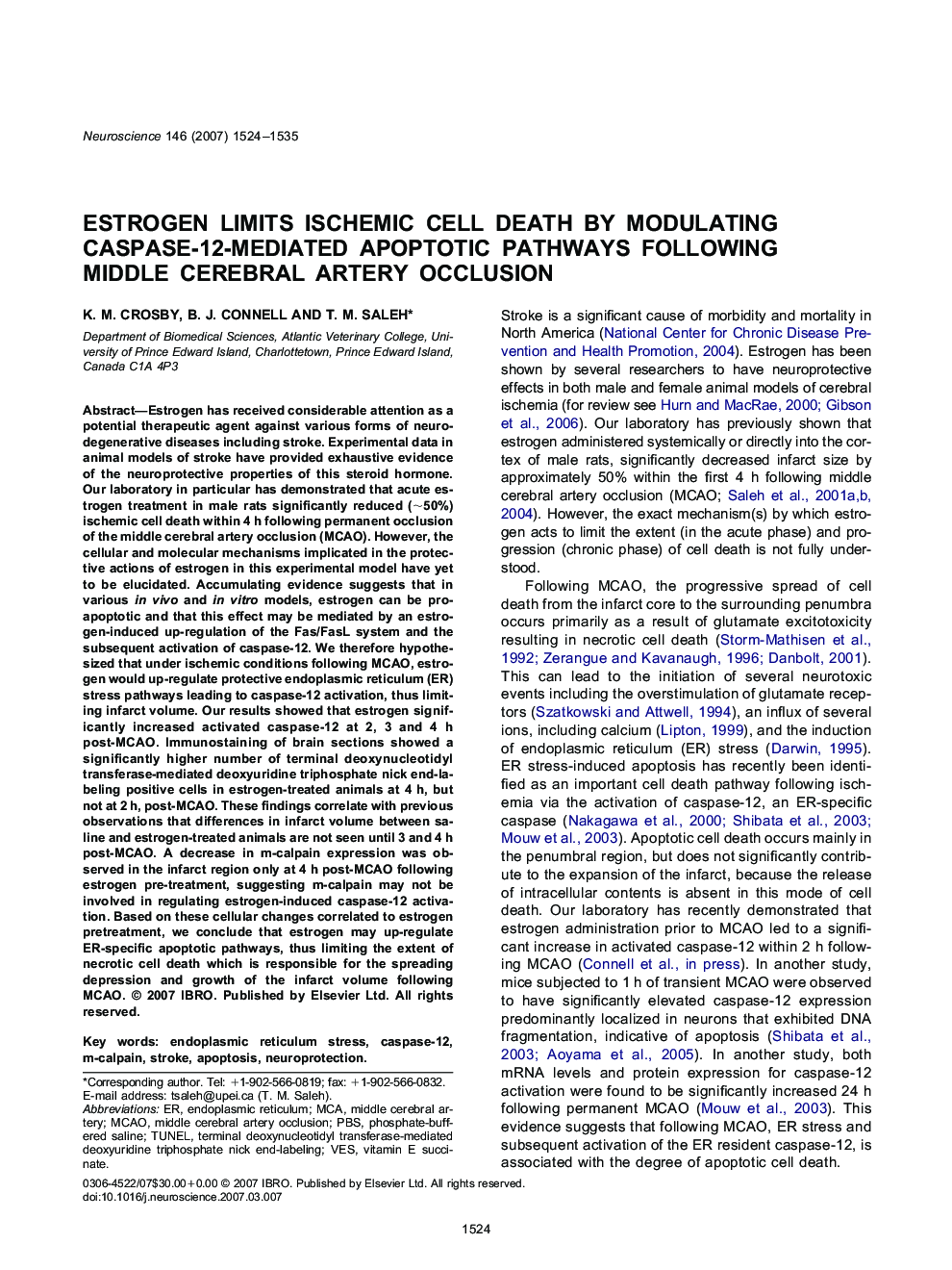| Article ID | Journal | Published Year | Pages | File Type |
|---|---|---|---|---|
| 4341840 | Neuroscience | 2007 | 12 Pages |
Abstract
Estrogen has received considerable attention as a potential therapeutic agent against various forms of neurodegenerative diseases including stroke. Experimental data in animal models of stroke have provided exhaustive evidence of the neuroprotective properties of this steroid hormone. Our laboratory in particular has demonstrated that acute estrogen treatment in male rats significantly reduced (â¼50%) ischemic cell death within 4 h following permanent occlusion of the middle cerebral artery occlusion (MCAO). However, the cellular and molecular mechanisms implicated in the protective actions of estrogen in this experimental model have yet to be elucidated. Accumulating evidence suggests that in various in vivo and in vitro models, estrogen can be pro-apoptotic and that this effect may be mediated by an estrogen-induced up-regulation of the Fas/FasL system and the subsequent activation of caspase-12. We therefore hypothesized that under ischemic conditions following MCAO, estrogen would up-regulate protective endoplasmic reticulum (ER) stress pathways leading to caspase-12 activation, thus limiting infarct volume. Our results showed that estrogen significantly increased activated caspase-12 at 2, 3 and 4 h post-MCAO. Immunostaining of brain sections showed a significantly higher number of terminal deoxynucleotidyl transferase-mediated deoxyuridine triphosphate nick end-labeling positive cells in estrogen-treated animals at 4 h, but not at 2 h, post-MCAO. These findings correlate with previous observations that differences in infarct volume between saline and estrogen-treated animals are not seen until 3 and 4 h post-MCAO. A decrease in m-calpain expression was observed in the infarct region only at 4 h post-MCAO following estrogen pre-treatment, suggesting m-calpain may not be involved in regulating estrogen-induced caspase-12 activation. Based on these cellular changes correlated to estrogen pretreatment, we conclude that estrogen may up-regulate ER-specific apoptotic pathways, thus limiting the extent of necrotic cell death which is responsible for the spreading depression and growth of the infarct volume following MCAO.
Keywords
Related Topics
Life Sciences
Neuroscience
Neuroscience (General)
Authors
K.M. Crosby, B.J. Connell, T.M. Saleh,
